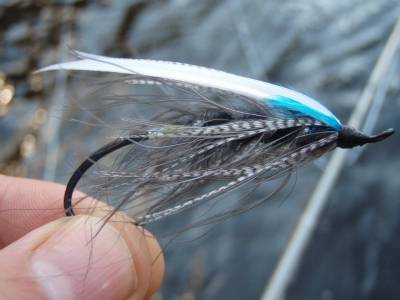Fly tying is the art of creating artificial flies that anglers use in fly fishing to catch fish. It is a fascinating and rewarding hobby, which requires skill and patience. In this blog, we explore the history, techniques, and benefits of fly tying.

- The History of Fly Tying:
Fly tying dates back to ancient times when humans used natural materials such as feathers, fur, and hair to create handcrafted flies. However, it was not until the 15th century that fly fishing and fly tying became popular in Europe. English writers such as Dame Juliana Berners and Izaak Walton wrote about fly fishing and the techniques for creating artificial flies.
In the 19th century, fly tying advanced significantly with the introduction of new materials such as silk thread, tinsel, and hooks made of steel. Fly tying became a popular hobby in the United States, with anglers creating unique designs and patterns to attract fish.
Today, fly tying has become a global phenomenon with fly fishing enthusiasts creating intricate and lifelike flies to target fish species worldwide.
- Techniques of Fly Tying:
Fly tying involves a set of techniques that anglers use to create their own designs and patterns. The following are some of the most common techniques:
1. Wrapping and Spinning: Anglers use the wrapping technique to attach materials such as fur, feathers, and thread to the hook. They also use the spinning technique to create a more dense and compact fly.
2. Dubbing: Dubbing is the process of attaching natural or synthetic materials such as rabbit fur, wool, or synthetic fibers to the hook. It enables anglers to create realistic, lifelike flies.
3. Hackling: Hackling involves using feathers to create a collar around the fly's head, which imitates the legs of an insect or a small fish.
4. Winging: Winging is the process of attaching feathers or synthetic materials to the hook to imitate the wings of an insect or a small fish.
The techniques of fly tying require patience, practice, and creativity. With time and experience, anglers can develop their own unique style and patterns that can be highly effective in catching fish.
- Benefits of Fly Tying:
Fly tying is not only a hobby, but it also has several benefits. Here are some of them:
1. It enhances creativity: Fly tying allows anglers to create their own designs and patterns, which improves their artistic skills and creativity.
2. It is therapeutic: Fly tying requires focus and concentration, which makes it a great stress-relieving activity.
3. It is a money-saving hobby: Rather than buying expensive flies, anglers can create their own, which reduces the cost of fishing equipment.
4. It improves fishing success: Creating lifelike flies that imitate the natural prey of fish can improve the chances of catching fish.
5. It provides a sense of accomplishment: Catching fish with a self-created fly gives anglers a sense of pride and accomplishment.
- Conclusion:
Fly tying is a fascinating and rewarding hobby that requires creativity, patience, and skill. It has a rich history and has evolved significantly, with new materials and techniques being introduced over time. Fly tying provides several benefits, including creativity enhancement, stress relief, cost savings, fishing success, and a sense of accomplishment. It is a great way to enhance the overall fly fishing experience and bring anglers closer to nature.